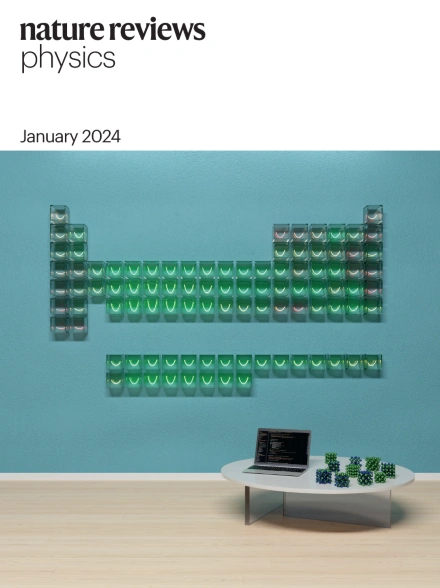网络重正化
IF 39.5
1区 物理与天体物理
Q1 PHYSICS, APPLIED
引用次数: 0
摘要
重正化群(RG)是一个强大的理论框架。它用于具有多个自由度的系统,在不同的分辨率水平上转换其构型描述以及相关的模型参数和耦合常数。RG 还提供了一种识别相变临界点并研究其周围系统行为的方法。在传统的物理应用中,RG 主要建立在同质性、对称性、几何性和位置性等概念的基础上,以定义度量距离、尺度变换和自相似粗粒度方案。最近,人们努力将 RG 概念扩展到复杂网络。然而,在这些系统中,不一定存在明确的几何坐标,不同的节点和子图可能具有不同的统计特性,也不存在同质晶格般的对称性--所有这些特点都使得定义一致的重正化程序变得复杂。在本技术综述中,我们将讨论网络重正化的主要方法、重要进展和尚存的挑战。重正化群(RG)是一种理论框架,用于跨尺度转换系统和识别相变临界点。近年来,人们努力将重正化群扩展到复杂网络,这对传统假设提出了挑战。本技术综述涵盖关键方法和公开挑战。本文章由计算机程序翻译,如有差异,请以英文原文为准。

Network renormalization
The renormalization group (RG) is a powerful theoretical framework. It is used on systems with many degrees of freedom to transform the description of their configurations, along with the associated model parameters and coupling constants, across different levels of resolution. The RG also provides a way to identify critical points of phase transitions and study the system’s behaviour around them. In traditional physical applications, the RG largely builds on the notions of homogeneity, symmetry, geometry and locality to define metric distances, scale transformations and self-similar coarse-graining schemes. More recently, efforts have been made to extend RG concepts to complex networks. However, in such systems, explicit geometric coordinates do not necessarily exist, different nodes and subgraphs can have different statistical properties, and homogeneous lattice-like symmetries are absent — all features that make it complicated to define consistent renormalization procedures. In this Technical Review, we discuss the main approaches, important advances, and the remaining open challenges for network renormalization. The renormalization group (RG) is a theoretical framework to transform systems across scales and identify critical points of phase transitions. In recent years, efforts have extended RG to complex networks, which challenge traditional assumptions. This Technical Review covers key approaches and open challenges.
求助全文
通过发布文献求助,成功后即可免费获取论文全文。
去求助
来源期刊

Nature Reviews Physics
Multiple-
CiteScore
47.80
自引率
0.50%
发文量
122
期刊介绍:
Nature Reviews Physics is an online-only reviews journal, part of the Nature Reviews portfolio of journals. It publishes high-quality technical reference, review, and commentary articles in all areas of fundamental and applied physics. The journal offers a range of content types, including Reviews, Perspectives, Roadmaps, Technical Reviews, Expert Recommendations, Comments, Editorials, Research Highlights, Features, and News & Views, which cover significant advances in the field and topical issues. Nature Reviews Physics is published monthly from January 2019 and does not have external, academic editors. Instead, all editorial decisions are made by a dedicated team of full-time professional editors.
 求助内容:
求助内容: 应助结果提醒方式:
应助结果提醒方式:


